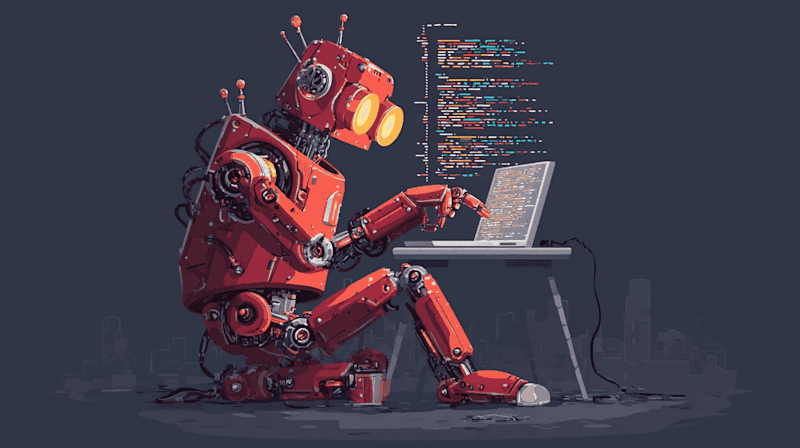TWO AI: The Indian Startup Revolutionizing Enterprise AI Solutions
2 Sources
2 Sources
[1]
Meet the Indian AI Startup Quietly Taking Over the Enterprise World
SUTRA yet again emerges as #1 in Indian language AI, the research report claims. Indian AI startup TWO is quietly marking a mark in the fast-emerging artificial intelligence market. In an interview with AIM, founder Pranav Mistry revealed that the company generated $4 million in revenue this quarter and expects $20 million for next year. This development comes as TWO AI's SUTRA, a series of multilingual online GenAI models, added a new feather in its cap. The company claims it outperformed GPT-4o, Llama 3.1, and Indic LLMs, including G42's Nanda, Sarvam's OpenHathi and AI4Bharat's Airavata, and leading in over 14 Indian languages. Earlier this year, the company launched ChatSUTRA, a ChatGPT-like chatbot. Mistry shared that the platform currently has over 600,000 unique users. Unlike other startups, TWO AI targets only big enterprise customers instead of pursuing the consumer market. "Jio is one of our major enterprise customers, and we also work with clients like Shinhan Bank and Samsung SDS in Korea," Mistry said. He further revealed that the company has started partnering with companies like NVIDIA and Microsoft from a technology perspective, and is working with them as well. "We are targeting India, Korea, Japan, and some parts of Southeast Asia, like Vietnam, specifically the central region. APAC (Asia-Pacific) is one of the key markets that we are always going to focus on," Mistry added. Recently, TWO hosted Mukesh Ambani, chairman of Reliance Industries, and Akash Ambani, chairman of Reliance Jio Infocomm, at their US office. Over a cup of tea, they discussed the evolving role of AI in India and beyond. Without taking names, Mistry revealed that in India one of the largest banks and financial sectors is among the customers the company will onboard. "Our solutions are in high demand, particularly in industries like finance, services, and retail," he said. SUTRA's business model focuses on providing high-touch, customised solutions for a select group of large enterprises. "We don't need 100 customers," said Mistry. "We need 10 good customers." He explained that by using this method, they are reaching billions of customers, as these enterprises already have millions of customers. "The focus is to become not the OpenAI of the world, not just an application layer company, but an AI solutions company, going after large enterprises and helping them solve problems with AI," he added. He shares his goal of following a path similar to that of Palantir's. Mistry revealed that the company's next project is predictive AI. "Predictive AI is game-changing for these data-dependent industries. From manufacturing to finance, governance, and energy sectors, everyone can really leverage the decision-making capability of forecasting," he explained. The model is called Sutra Predict. Mistry pointed out that it is a small model which is trained on trillion data points and time series data entries. "The model is small because the architecture of this one is much easier than the text-based ones, and it is already showing great results in some particular domains that our customers are already trying." He explained that time series predictive models are a specific type of statistical model used to analyse and forecast data points that are collected over time. They are built to identify patterns, trends, and seasonal variations within the data to make predictions about future values. Mistry explained that with the advent of transformers, models can now process and integrate any kind of data, as seen in predictive models like Google TimesFM and Amazon Chronos. Highlighting a real-world application, he shared that an EV battery diagnostic company in India is using Sutra Predict to identify fire risks by monitoring temperature and voltage fluctuations. "In India, no one had access to the level of GPU clusters we needed," Mistry said. The SUTRA team overcame this limitation by porting their models to run on CPU clusters. Despite the challenges, he said the team was able to scale and serve up to 100 billion customers. Moreover, Mistry shared that they were the first ones to catch on to the trend of 1-bit LLMs. Notably, Microsoft recently introduced BitNet.cpp, an inference framework for 1-bit LLMs, enabling fast and efficient inference for models like BitNet b1.58. Mistry said they have successfully adapted the SUTRA model to work with 1-bit weights, allowing it to run as a lightweight model on CPUs. Moreover, in partnership with NVIDIA, the company launched SUTRA-OP, offering systems like the NVIDIA DGX (Deep GPU Xceleration) box equipped with powerful GPUs for demanding AI tasks. For customers requiring lighter and more cost-effective solutions, SUTRA also provides its hardware options, including SUTRA OP2, OP4, and OP8, which are available for lease. "Customers are not purchasing this, they are leasing it from us. It's a monthly lease for both the OP and the SUTRA solutions," said Mistry. The company recently launched a voice-to-voice AI model called Sutra HiFi. Using a dual diffusion transformer architecture, the model effectively separates distinct voice tones from language-specific accents, promising a better voice interaction quality. "Sutra HiFi brings the ability to interpret conversations seamlessly in languages that we care about. Currently, it supports 12 languages that we have tested properly," Mistry said. He suggested that Sutra HiFi can easily empower applications in India or any multilingual market while keeping the cost low and accuracy high. Discussing Infosys co-founder Nandan Nilekani's point of view that India should be the use case capital of AI, Mistry said that he has a slightly different perspective. "India must focus on building the fundamental AI capabilities because we don't want to become dependent on someone else in the future, as data is one of the gold mines in AI," he concluded.
[2]
TWO Hai No. 1! 🚀
SUTRA yet again emerges as #1 in Indian language AI, the startup founder claims. Indian AI startup TWO is quietly marking a mark in the fast-emerging artificial intelligence market. In an interview with AIM, founder Pranav Mistry revealed that the company generated $4 million in revenue this quarter and expected $20 million for next year. This development comes as TWO AI's SUTRA, a series of multilingual online GenAI models, added a new feather in its cap. The company claims it outperformed GPT-4o, Llama 3.1, and Indic LLMs, including G42's Nanda, Sarvam's OpenHathi and AI4Bharat's Airavata, and leading in over 14 Indian languages. Earlier this year, the company launched ChatSUTRA, a ChatGPT-like chatbot. Mistry shared that the platform currently has over 600,000 unique users. Unlike other startups, TWO AI targets only big enterprise customers instead of pursuing the consumer market. "Jio is one of our major enterprise customers, and we also work with clients like Shinhan Bank and Samsung SDS in Korea," Mistry said. He further revealed that the company has started partnering with companies like NVIDIA and Microsoft from a technology perspective, and is working with them as well. "We are targeting India, Korea, Japan, and some parts of Southeast Asia, like Vietnam, specifically the central region. APAC (Asia-Pacific) is one of the key markets that we are always going to focus on," Mistry added. Recently, TWO hosted Mukesh Ambani, chairman of Reliance Industries, and Akash Ambani, chairman of Reliance Jio Infocomm, at their US office. Over a cup of tea, they discussed the evolving role of AI in India and beyond. Without taking names, Mistry revealed that in India one of the largest banks and financial sectors is among the customers the company will onboard. "Our solutions are in high demand, particularly in industries like finance, services, and retail," he said. SUTRA's business model focuses on providing high-touch, customised solutions for a select group of large enterprises. "We don't need 100 customers," said Mistry. "We need 10 good customers." He explained that by using this method, they are reaching billions of customers, as these enterprises already have millions of customers. "The focus is to become not the OpenAI of the world, not just an application layer company, but an AI solutions company, going after large enterprises and helping them solve problems with AI," he added. He shares his goal of following a path similar to that of Palantir's. Mistry revealed that the company's next project is predictive AI. "Predictive AI is game-changing for these data-dependent industries. From manufacturing to finance, governance, and energy sectors, everyone can really leverage the decision-making capability of forecasting," he explained. The model is called Sutra Predict. Mistry pointed out that it is a small model which is trained on trillion data points and time series data entries. "The model is small because the architecture of this one is much easier than the text-based ones, and it is already showing great results in some particular domains that our customers are already trying." He explained that time series predictive models are a specific type of statistical model used to analyse and forecast data points that are collected over time. They are built to identify patterns, trends, and seasonal variations within the data to make predictions about future values. Mistry explained that with the advent of transformers, models can now process and integrate any kind of data, as seen in predictive models like Google TimesFM and Amazon Chronos. Highlighting a real-world application, he shared that an EV battery diagnostic company in India is using Sutra Predict to identify fire risks by monitoring temperature and voltage fluctuations. "In India, no one had access to the level of GPU clusters we needed," Mistry said. The SUTRA team overcame this limitation by porting their models to run on CPU clusters. Despite the challenges, he said the team was able to scale and serve up to 100 billion customers. Moreover, Mistry shared that they were the first ones to catch on to the trend of 1-bit LLMs. Notably, Microsoft recently introduced BitNet.cpp, an inference framework for 1-bit LLMs, enabling fast and efficient inference for models like BitNet b1.58. Mistry said they have successfully adapted the SUTRA model to work with 1-bit weights, allowing it to run as a lightweight model on CPUs. Moreover, in partnership with NVIDIA, the company launched SUTRA-OP, offering systems like the NVIDIA DGX (Deep GPU Xceleration) box equipped with powerful GPUs for demanding AI tasks. For customers requiring lighter and more cost-effective solutions, SUTRA also provides its hardware options, including SUTRA OP2, OP4, and OP8, which are available for lease. "Customers are not purchasing this, they are leasing it from us. It's a monthly lease for both the OP and the SUTRA solutions," said Mistry. The company recently launched a voice-to-voice AI model called Sutra HiFi. Using a dual diffusion transformer architecture, the model effectively separates distinct voice tones from language-specific accents, promising a better voice interaction quality. "Sutra HiFi brings the ability to interpret conversations seamlessly in languages that we care about. Currently, it supports 12 languages that we have tested properly," Mistry said. He suggested that Sutra HiFi can easily empower applications in India or any multilingual market while keeping the cost low and accuracy high. Discussing Infosys co-founder Nandan Nilekani's point of view that India should be the use case capital of AI, Mistry said that he has a slightly different perspective. "India must focus on building the fundamental AI capabilities because we don't want to become dependent on someone else in the future, as data is one of the gold mines in AI," he concluded.
Share
Share
Copy Link
TWO AI, an Indian startup, is making significant strides in the AI market with its SUTRA models, focusing on enterprise solutions and expanding its presence in the APAC region.

TWO AI: Emerging as a Leader in Indian Language AI
TWO AI, an Indian artificial intelligence startup, is quietly making waves in the enterprise AI market. Founded by Pranav Mistry, the company has reported impressive financial growth, generating $4 million in revenue this quarter and projecting $20 million for the next year
1
.SUTRA: Outperforming Global AI Models
TWO AI's flagship product, SUTRA, a series of multilingual online GenAI models, has claimed a significant achievement. According to the company, SUTRA has outperformed major AI models like GPT-4o, Llama 3.1, and several Indic LLMs in over 14 Indian languages
1
. This accomplishment positions TWO AI as a formidable player in the Indian language AI space.Enterprise-Focused Strategy
Unlike many AI startups targeting the consumer market, TWO AI has adopted a unique approach by focusing solely on large enterprise customers. Mistry revealed that Jio, one of India's largest telecom companies, is among their major clients. The company also serves international clients such as Shinhan Bank and Samsung SDS in Korea
1
.Expanding Product Portfolio
TWO AI is not resting on its laurels with SUTRA. The company has introduced several new products:
- ChatSUTRA: A ChatGPT-like chatbot with over 600,000 unique users
1
. - Sutra Predict: A predictive AI model trained on trillion data points, aimed at industries like manufacturing, finance, and energy
1
. - Sutra HiFi: A voice-to-voice AI model supporting 12 languages, designed for seamless conversation interpretation
1
.
Related Stories
Innovative Technical Solutions
TWO AI has demonstrated technical prowess in overcoming infrastructure challenges:
- CPU Adaptation: The team ported their models to run on CPU clusters due to limited GPU access in India
1
. - 1-bit LLMs: TWO AI claims to be among the first to adopt 1-bit LLMs, allowing SUTRA to run as a lightweight model on CPUs
1
. - Hardware Solutions: In partnership with NVIDIA, TWO AI offers SUTRA-OP, a range of hardware options for AI tasks
1
.
Future Outlook and Vision
Mistry envisions TWO AI not as "the OpenAI of the world," but as an AI solutions company focused on solving enterprise problems. The company is targeting the APAC region, including India, Korea, Japan, and parts of Southeast Asia
1
.Contrary to the view that India should be the "use case capital of AI," Mistry believes in building fundamental AI capabilities to ensure India's independence in the AI landscape
1
.As TWO AI continues to expand its reach and capabilities, it stands poised to make a significant impact on the enterprise AI market, particularly in multilingual and region-specific applications.
References
Summarized by
Navi
[2]
Related Stories
Recent Highlights
1
Google launches Gemini 3 Flash as default AI model, delivering speed with Pro-grade reasoning
Technology

2
OpenAI launches GPT Image 1.5 as AI image generator war with Google intensifies
Technology

3
OpenAI launches ChatGPT app store, opening doors for third-party developers to build AI-powered apps
Technology








